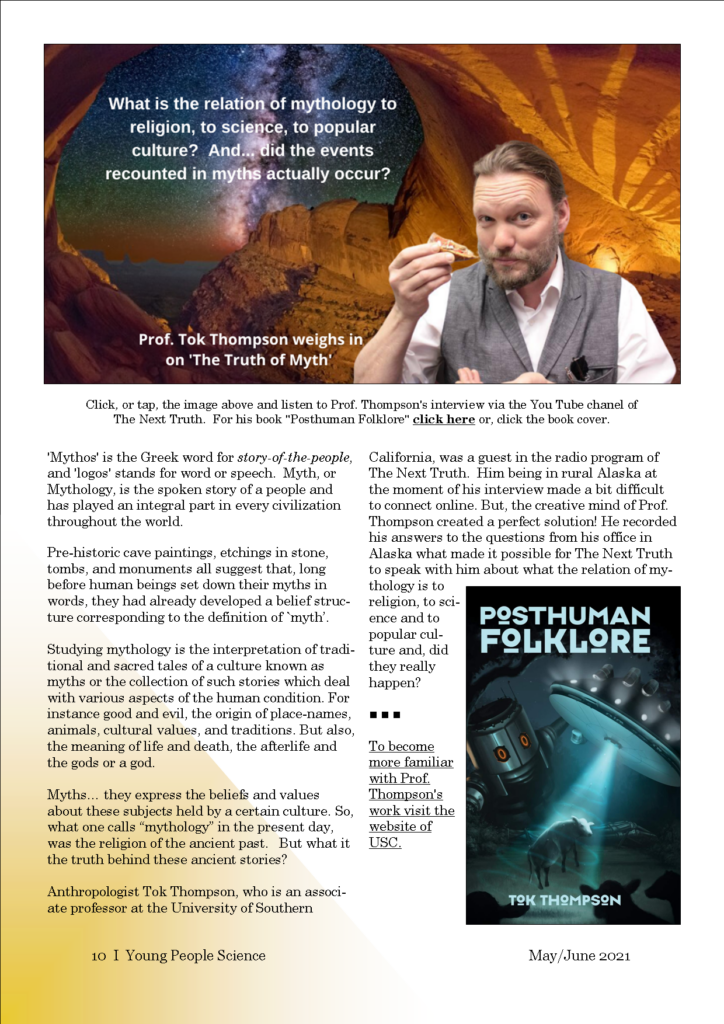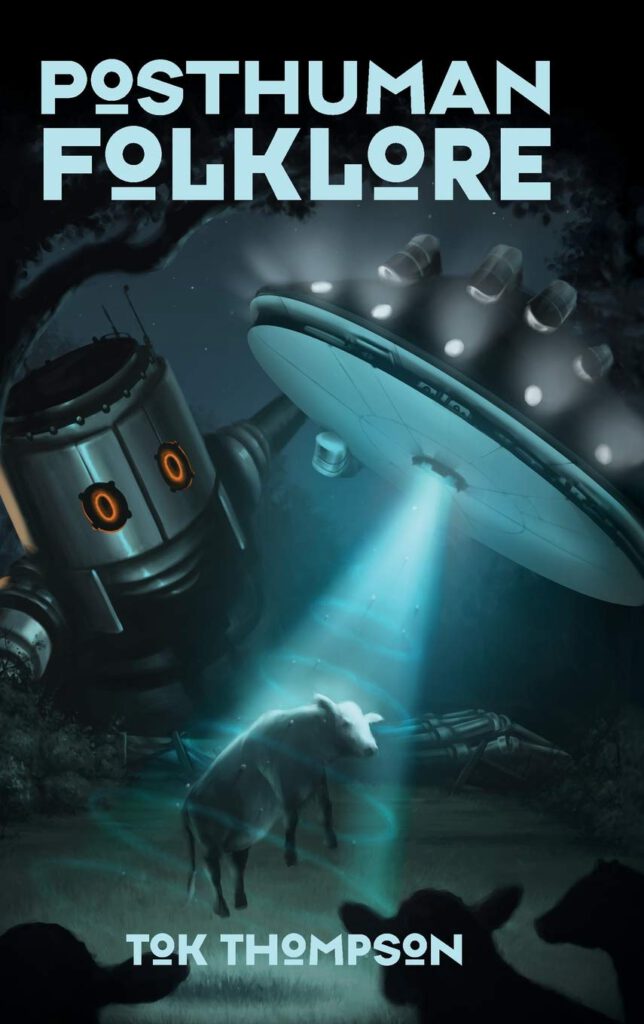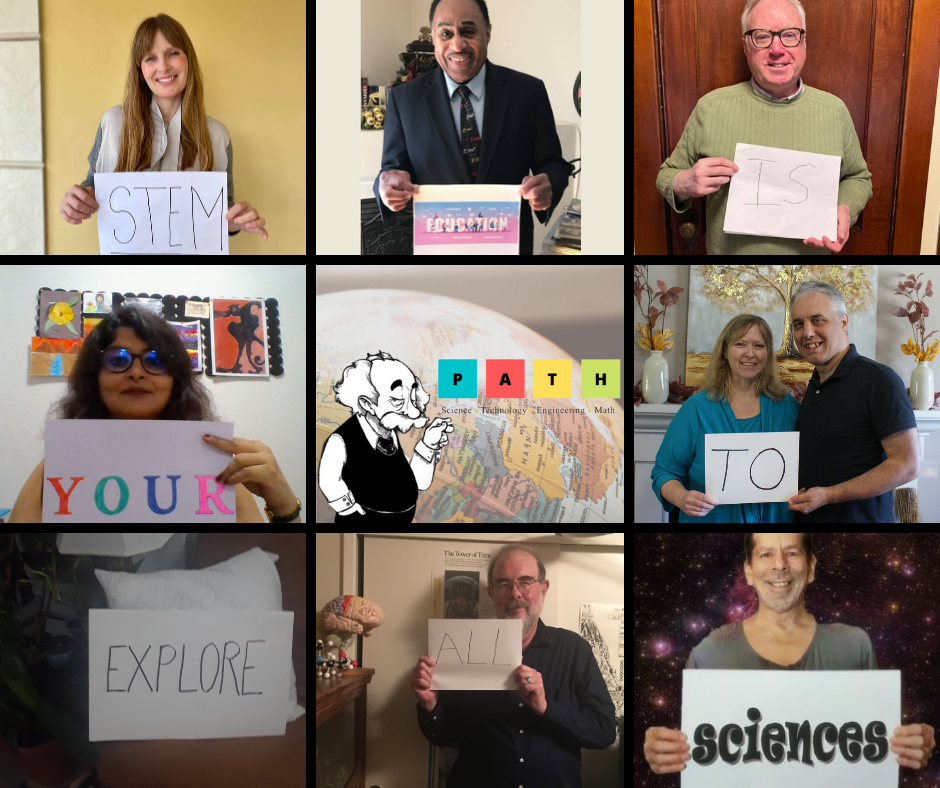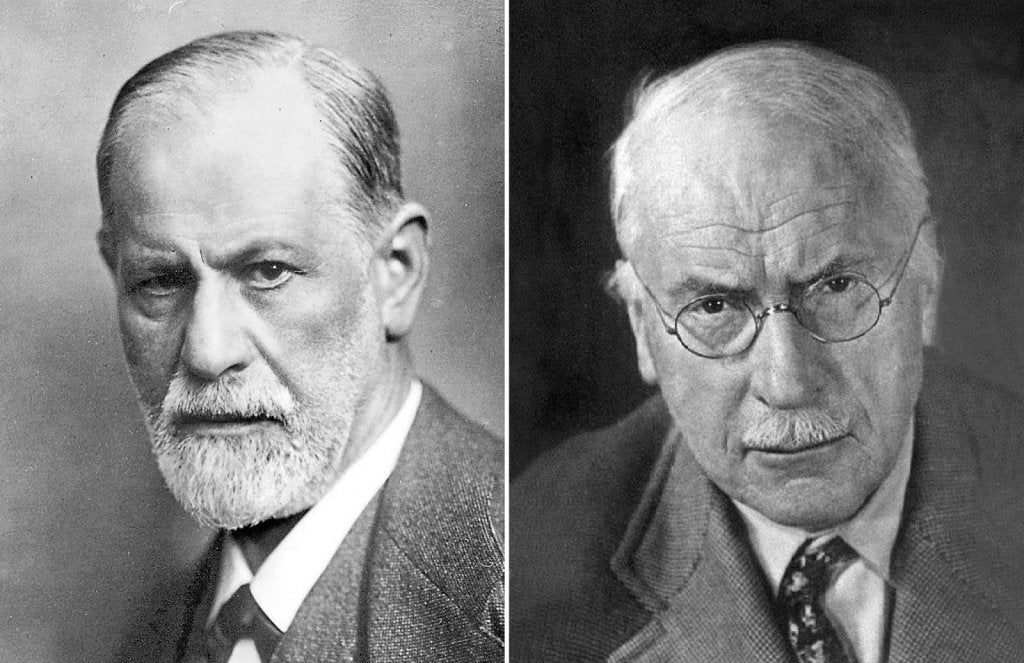Reiki; Does it Brings the Human Psyche Into an Alternative State of Reality?
With the owner and president of the company Austen & Parker and Reiki practitioner, Davina Zarnighian
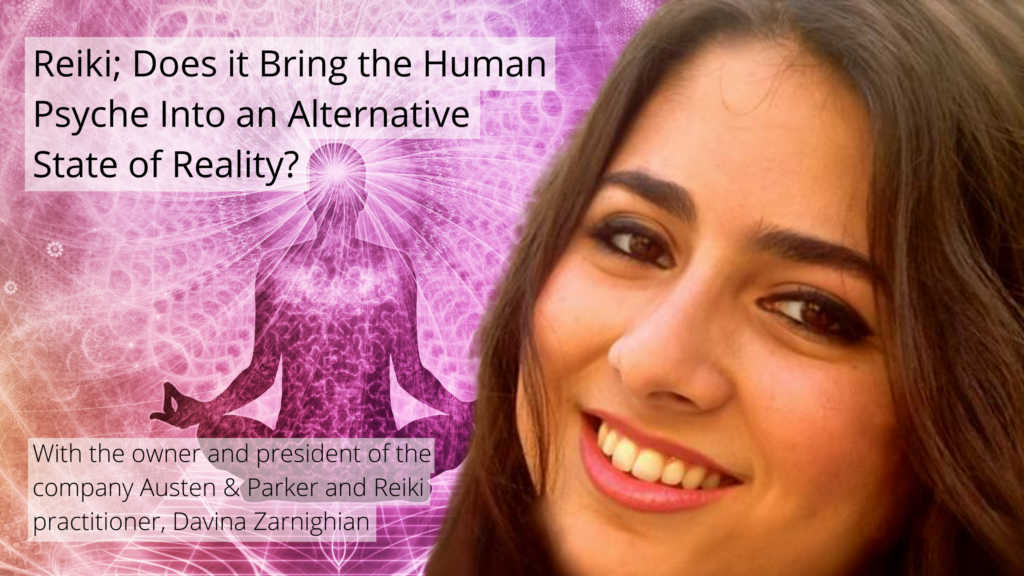
Proponents and practitioners of various esoteric forms of spirituality and alternative medicine refer to a variety of claimed experiences and phenomena as being due to “energy” or “force” that defy measurement and thus are distinguished from the scientific form of energy.
Reiki is a Japanese form of alternative medicine called energy healing. Reiki practitioners use a technique called ‘palm healing’ or ‘hands-on healing’ through which a “universal energy”, aka Chi, is said to be transferred through the palms of the practitioner to the patient in order to encourage emotional or physical healing.
Even though the concept of “qi” (energy) appears throughout traditional East Asian culture, such as in the art of Feng Shui and Chinese martial arts, there seems to be no scientific evidence for the existence of such energy.
I am your host Maria Anna van Driel and you’re listening to “The Next Truth; Where Science and Myth Meet”. This week I am speaking with the owner and president of the company Austen & Parker and Reiki practitioner, Davina Zarnighian and discus with her the pro’s and con’ of Reiki and, how jewelry is related to this ancient energy healing.
Should We Take a Second Look at How We Teach These Days?
With Microsoft Certified Trainer, Dr. Keith McNally
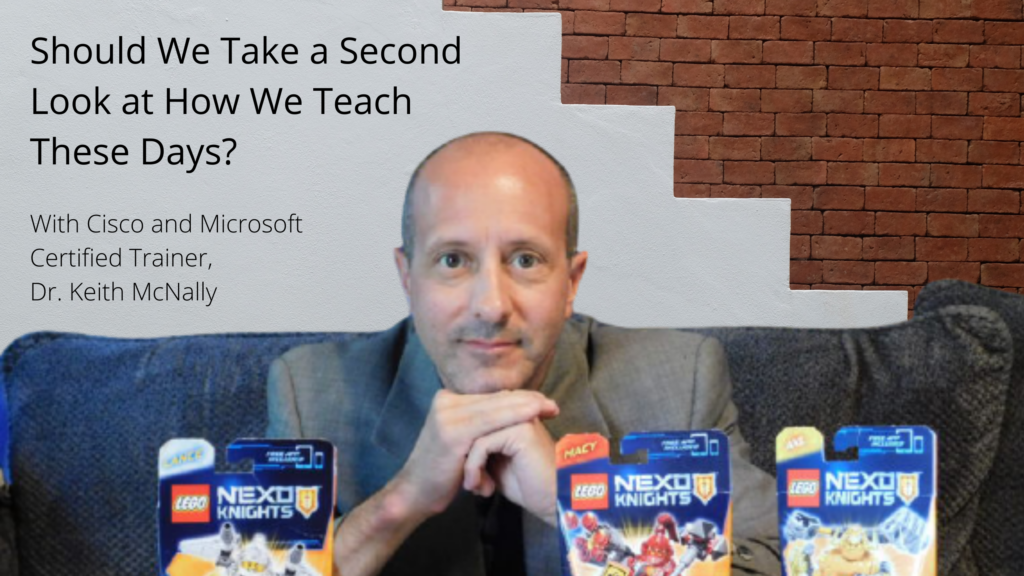
“The earliest roots of science can be traced to Ancient Egypt and Mesopotamia in around 3000 to 1200 BCE. Their contributions to mathematics, astronomy, and medicine entered and shaped Greek natural philosophy of classical antiquity, whereby formal attempts were made to provide explanations of events in the physical world based on natural causes.”
Nowadays, young people have a free access to a high speed electronically world we have become to know as ‘The Internet’. Wikipedia in this, is a frequently visited site for students to upgrade their already possessing knowledge.
But how reliable is the written knowledge we can find on the internet? I mean, are we in the position of adding a form of creative an critical thinking to this avalanche of information? Are we allowed to take this information, discuss it , break the taboo and convert it all into a new evolution in science?
I am your host Maria Anna van Driel and you’re listening to “The Next Truth; Where Science and Myth Meet”. This week I am speaking with Dr. Keith McNally who has created a project-based learning environments in college classrooms for the past dozen years.
“Young People Science” May/June 2021 – Out Now!
TNT-Young-People-Science-May-June-2021Scroll your mouse/cursor over the cover with the scientists and click (at the bottom of the cover) the box with the little arrows. This way you can read this month’s edition of your scientific magazine “Young People Science”.
Or, click here to download the interactive PDF via MagCloud.
From Philosophy to Microbiology…from Engineering to astrophysics, regardless which field is holding you in its grip, is firing up your curiosity… we can all agree on the fact that science is in no way boring, it rocks!
“Science Rocks!” This is an amazing message what should reach young people on a global scale. But sending this message into the world, what is improving the career opportunities for our future experts, for them to build on the incredible knowledge, discovered and refined by renowned scientist from both the past and the present, is TEAM work which in turn is an essential STEM skill.
In this edition of Young People Science we discuss some STEM, or STE(A)M subjects which are not just a subject at school it’s a way of thinking and doing and an important skill set that could see your generation working together to solve some of the world’s greatest challenges.
For print-on-demand and the interactive digital issues of The Next Truth magazines visit: https://www.magcloud.com/browse/magazine/1512517
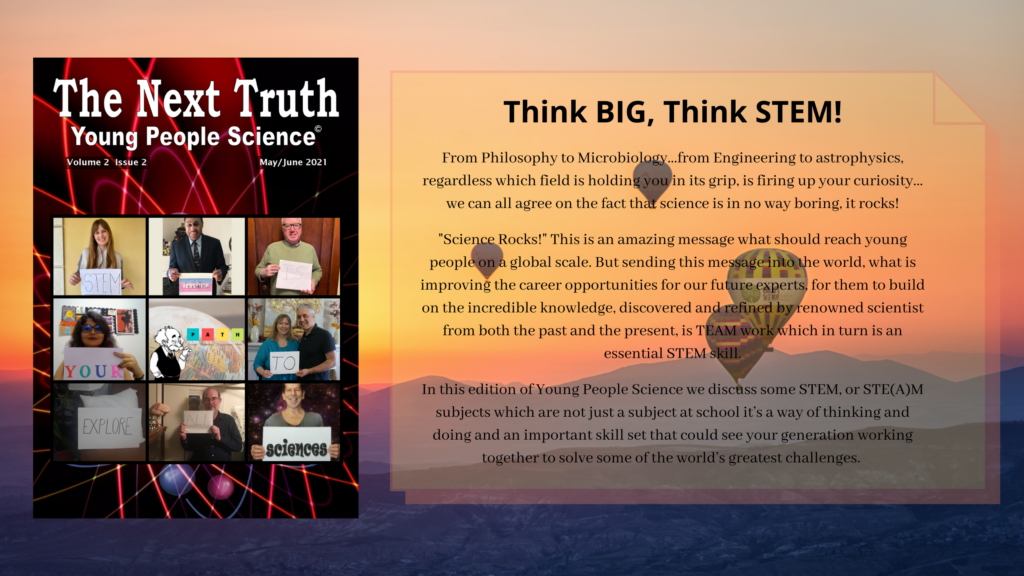
The Truth of Myth
An interview with Anthropologist and Associate Professor, Tok Thompson.
‘Mythos’ is the Greek word for story-of-the-people, and ‘logos’ stands for word or speech. Myth, or Mythology, is the spoken story of a people and has played an integral part in every civilization throughout the world.
Pre-historic cave paintings, etchings in stone, tombs, and monuments all suggest that, long before human beings set down their myths in words, they had already developed a belief structure corresponding to the definition of `myth’.
Studying mythology is the interpretation of traditional and sacred tales of a culture known as myths or the collection of such stories which deal with various aspects of the human condition. For instance good and evil… the origin of place-names, animals, cultural values, and traditions. But also, the meaning of life and death, the afterlife and the gods or a god.
Myths… they express the beliefs and values about these subjects held by a certain culture. So, what one calls “mythology” in the present day, was the religion of the ancient past. But what it the truth behind these ancient stories?
Click here to be directed to Prof. Thompson’s book (Amazon)
[Top]The Lost City of Atlantis, Alien Abductions and Ghostly Apparitions; Can We Explain the Unexplainable?
An interview with freelance writer, editor and author, Kathryn Hulick
A ghostly apparition walking through the wall, an odd shaped craft hovering in the sky or strong ripples on the surface of a lake indicating that there might be a sea monster swimming by! Even though many people have seen and reported these rare but remarkable events, they do not have an explanation for what they have witnessed.
Are those, in the dark hiding, eerie shadows, truly disembodied humans who are lost or, is this an effect of Sleep Paralysis.
Is walking through a forest at night only creepy because we are breathing in these, released by the trees, small amounts of methane gas while the pineal gland in your brain is detecting the ultra– and infra sound-waves are bouncing off on the trees after it has released by your own body? Or is there something malevolent hiding behind the shrouds, waiting for you to become its prey?!
The lost city of Atlantis, alien abductions, shadow figures and haunted houses; can we explain the unexplainable?
I am your host Maria Anna van Driel and you’re listening to “The Next Truth; Where Science and Myth Meet”. This week I am speaking with freelance writer, editor and the author of the book “Strange But True: 10 of the world’s greatest mysteries explained”, Kathryn Hulick and explore with her which scientific explanations there are for what it is that is haunting our dreams.
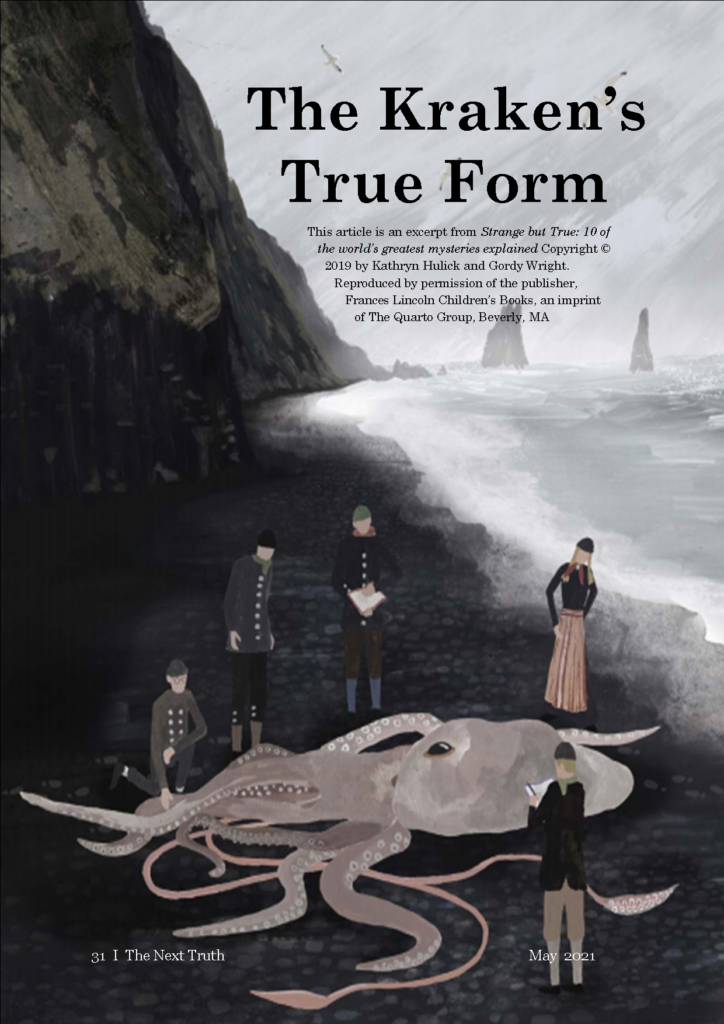
Will a Collective and Directed Consciousness Let Us Evolve Into a Type III Civilization?
With radio host, UFO investigator and author, Philip Kinsella
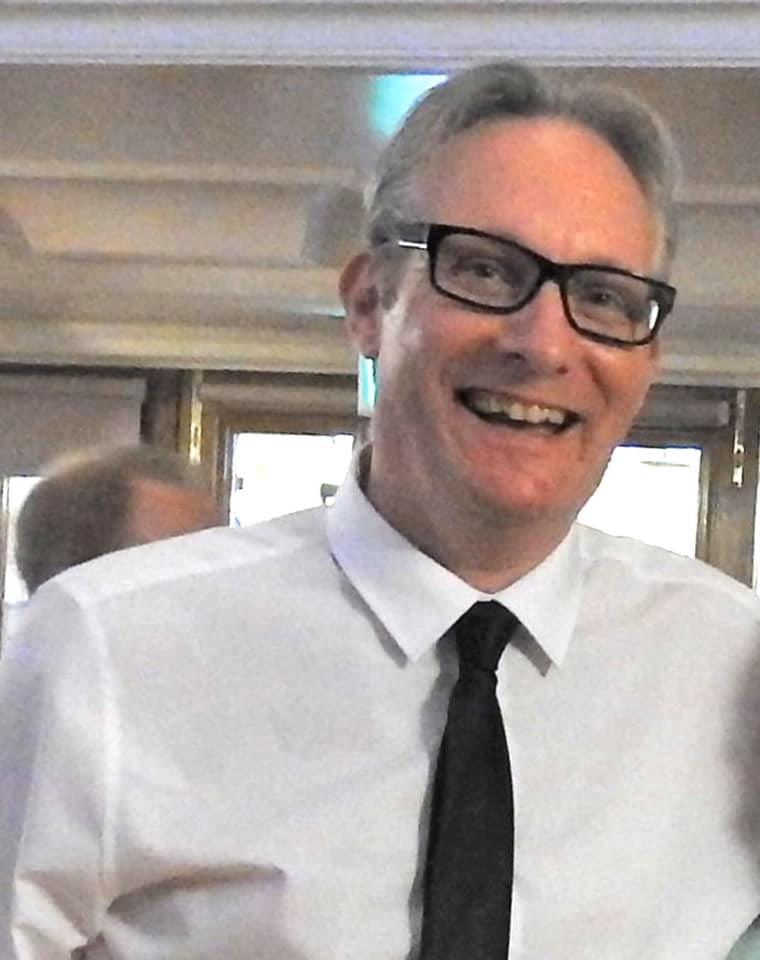
Imagine what we can accomplish if we all focus our consciousness toward creating more sustainable ways of generating energy, cleaning the earth, reducing hunger or, finding solutions for interstellar travel, and educating. Focusing your motive power on one goal, towards the right direction of movement, will accelerate the velocity and will move you closer to your goal.
According to the great mind of Nikola Tesla, that is the secret formula for increasing the collective human energy, how we raise our intelligence and evolve as a species.
But all this energy emanates from one single center, one single source what maintains all human life and supplies all human energy…the sun!
Can we, with a collective and directed consciousness, address this eternal energy in the Universe? Bundle it and build advanced technologies like a biological Dyson sphere, in order to save the Earth and evolve into a type III civilization?
I am your host Maria Anna van Driel… and you’re listening to “The Next Truth; Where Science and Myth Meet”… and this week I am welcoming back clairvoyant medium, UFO researcher and co-host of the radio show “Twin Souls”, Philip Kinsella…and discuss with him if building up the human energy means higher levels of operating power for our consciousness what, eventually, might let us evolve into a type III civilization.
[Top]STE(A)M Is For All!!
Regardless if it is an online (news) article that triggered our curiosity or, a document sent by email, we click the link and start reading. This is a skill many of us take for granted without thinking twice. But there are a myriad people in the world who cannot rely on their vision fully or partly. They are, for instance, born blind or, have lost their vision after an accident.
For parents whose children are blind or, those mentors, teachers, who are working with children whose eyesight is visually impaired, below you find 3 STEM articles which can be downloaded as a PDF. Just hit the ‘read-out-loud’ function on your computer/laptop after downloading the PDF’s, for your children and/or students to listen to the articles.
[Top]The Very First Letter of STEM is ‘Science’
By Maria Anna van Driel, www.medium.com

“The earliest roots of science can be traced to Ancient Egypt and Mesopotamia in around 3000 to 1200 BCE. Their contributions to mathematics, astronomy, and medicine entered and shaped Greek natural philosophy of classical antiquity, whereby formal attempts were made to provide explanations of events in the physical world based on natural causes.” Source: Wikipedia
Nowadays, young people have an almost free access to an interactive world we have become to know as ‘The Internet’. Wikipedia in this, is a frequently visited site for them to upgrade their already possessing knowledge.
But how reliable is the written knowledge we can find on the internet? I mean, are we in the position of adding a form of creative an critical thinking to this avalanche of information? Are we allowed to take this information, discuss it , break the taboo and convert it all into a new evolution in science?
“My research field does not quite fall within the framework of the standard model of STEM subjects.” Too often I hear this and similar comments from people experiencing this feeling of dissatisfaction what is, in my opinion, not something that should be screaming in the background of anyone’s passion for researching the myriad possibilities all sciences has to offer in the modern era we have counted to be the twenty-first century. This is not the true meaning of science. Science, regardless which field is firing up your curiosity, should start with exploring the question asked! Even if this questions falls slightly outside the frameworks of ‘accepted’ science.
So, are we allowed of breaking this problem, this taboo, and widen the boundaries that indicate the, in this line of thought, tunnel vision what seems to be taught so abundant since the removal of, for instance, Plato’s teachings?
It seems that here we are addressing that one particular sore spot in what the general public, as well as some scientists, think to understand about science. Unfortunately, this also leads to young people being taught that STEM subjects are those sciences which fall within the, by the majority, acceptable boundaries of what science is standing for.
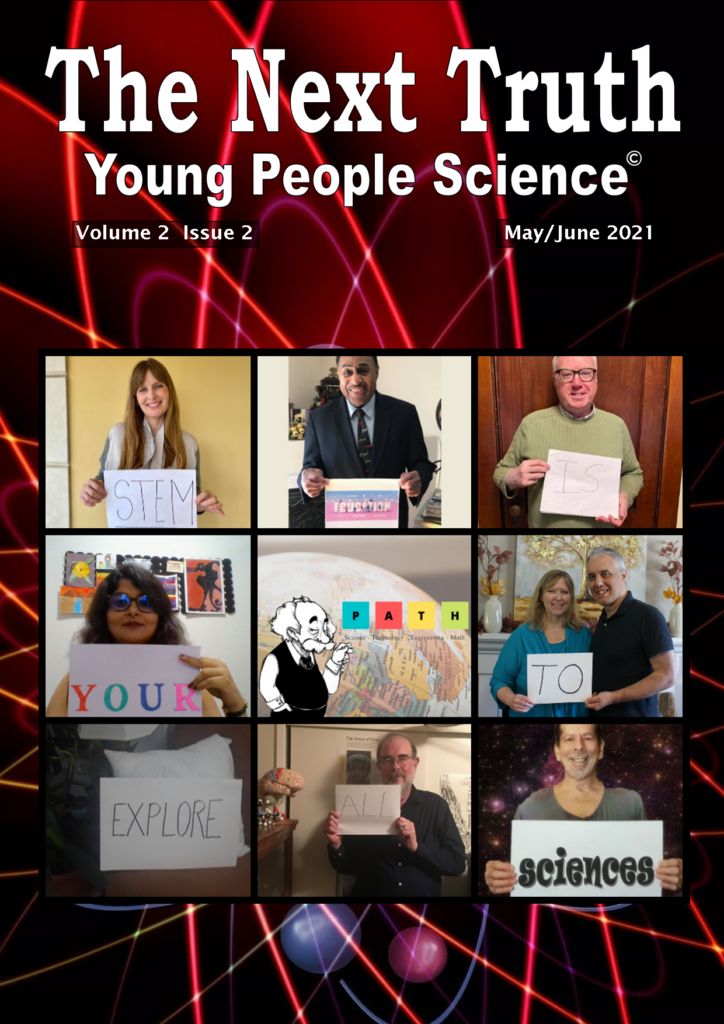
Why is creativity necessary to science and art?
Personally, I am of the opinion that STEM (STEAM) should speak of young people gaining the opportunity to explore all corners of science without this fear of being ridiculed. Young people should have this freedom of expressing their creativity in what we have become to understand as the standard model for science. This creativity is necessary in all sciences because it involves imagination, and imagination equals visualization. In other words, creativity in itself has ‘created’ the world we live in today.
Think about it, would a mathematician really be able to solve the problem in the moment he or she is focusing on the flat numbers only? Visualizing the numbers, use them as coordinates and connect them and, convert it all into multidimensional objects floating in a Euclidean space, seems to be a much easier way to solve a math problem.
Did you know that mathematics can be discerned in arts such as music, dance, painting, architecture, sculpture, and textiles? And did you also know that these are considered to be the first ‘technologies’ used in cultures and societies? I wonder how a skyscraper would look like when this creative visualization (thinking outside the box) is not taught to, for instance, an engineer.
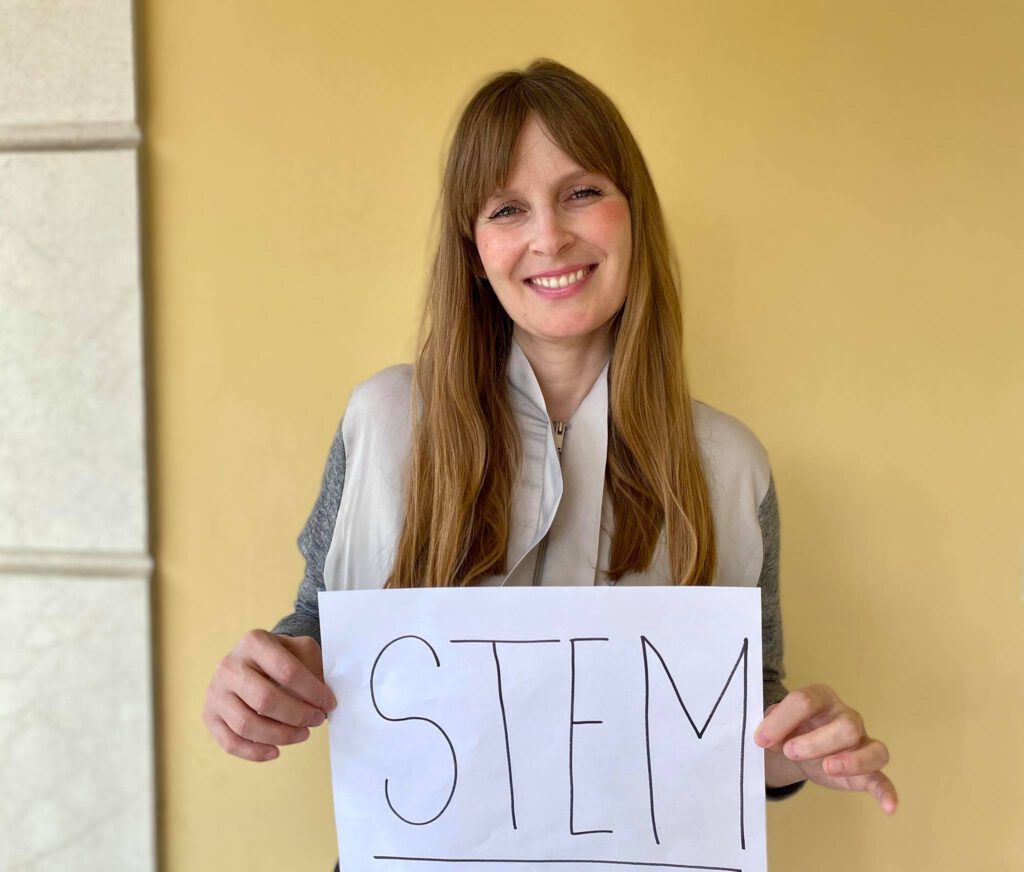
How it all connects
Even though Science is with humanity for centuries, it is still in its infant moment but that does not mean that as soon as you find yourself not agreeing with someone’s research results you should sweep it under the carpet and label it is as pseudo-science or, ‘hypothetical nonsense’.
You know that, at one point in time, the pony express was thought of being the fastest way to transport messages but, in that same period the Romans already had the intelligence to think of VLC (visible light communication) what most likely was copied from their Egyptians neighbors who understood the effect in charging light even more by using ‘mirrors’. Today we understand this as photon trapping which is something that is accepted by the majority.
Centauries later this term VLC, as well as its engineering, went beyond its own borders due to the curiosity of those who applied critical thinking to their scientific research. And if they did not had done so, none of us would have touch screens, internet, cell phones, electricity, a car… and physicists would not had the possibility to discover the Higgs Boson. Never forget, once upon at time there were scientific adventurist, visionaries, pioneers, who thought up an apparatus you know today as an accelerator.
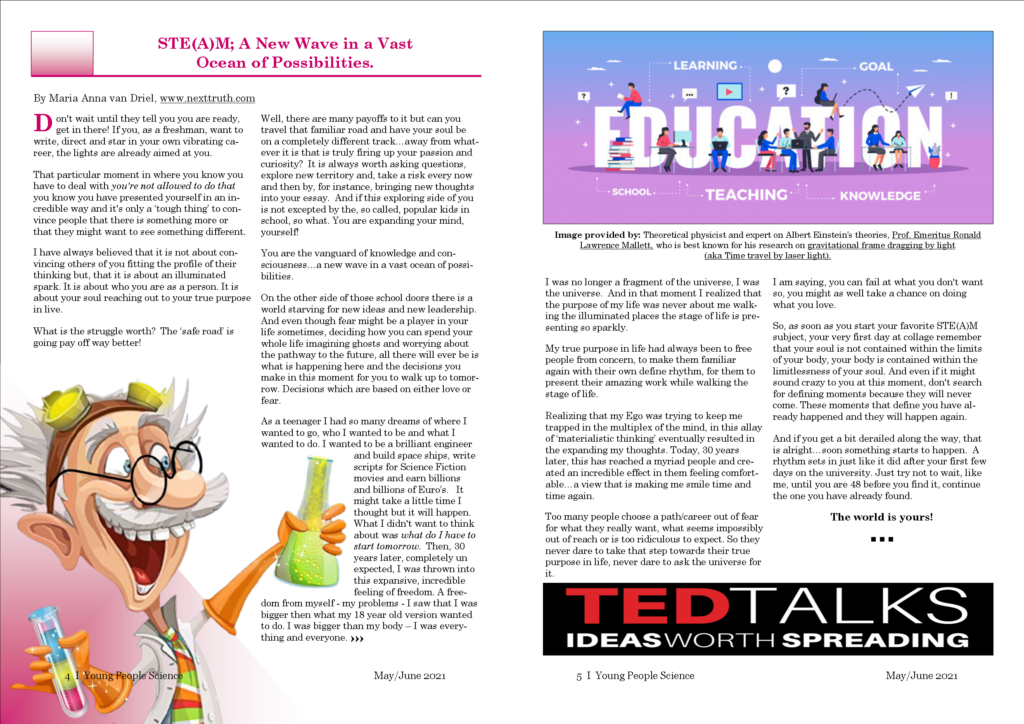
So, for all who are convinced that their research field is a bit outside the remit of any STEM subject, this thought falls within the range of being incorrect and seems to be based on a behavior of the majority accepting knowledge in a democratic manner. I wonder, how would the world today look like if Leonardo DaVinci, Nicolai Tesla, Albert Einstein, Carl Gustav Jung, Erwin Schödinger, just to name a few, had not applied this way of thinking to their research? Would we had the opportunity to speak with each other through this medium we call “Internet” and read the psychology between the lines of an email?
Remember that the very first letter of STEM is Science which is from the Latin word scientia, meaning “knowledge” what can refer to a theoretical or practical understanding of a subject and can be acquired in many different ways and from many different sources, including but not limited to perception, reason, memory, testimony, scientific inquiry, education, and practice.
According to Wikipedia, “The philosopher Plato famously pointed out the need for a distinction between knowledge and true belief in the Theaetetus, leading many to attribute to him a definition of knowledge as “justified true belief”. The difficulties with this definition raised by the Gettier problem have been the subject of extensive debate in epistemology (the philosophical study of knowledge) for more than half a century.”
On the latter, do I have to say more?
[Top]Why Our Brain is Translating Logical Objects Into Mythological Creatures and Eerie Shadows
With California State University’s Prof. of psychology, Matthew J. Sharps
Have you ever seen a dark shadow or silhouette at night while you cannot make out an attribute or features…just darkness. You might think it is your own shadow cast on the wall by a misplaced light. But as you stand still, the shadow…suddenly…moves.
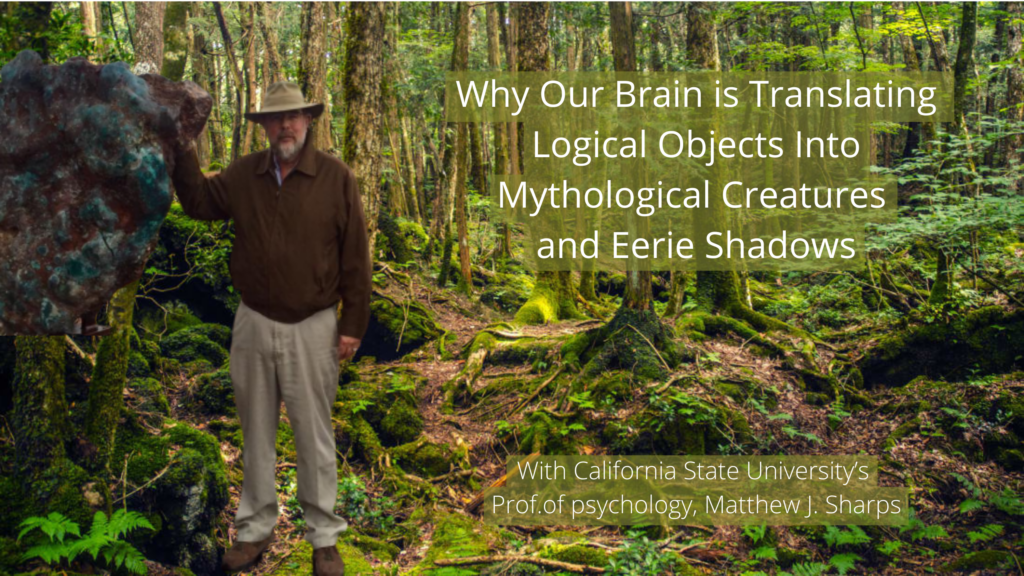
Throughout the history many cultures and nations have documented their experiences regarding this phenomenon what has become know in modern parapsychology as…the shadow people.
Many theories ´have been written ever since about what these shadowy figures are. Are they ghosts? Spirits, demons, angles? Or are they something entirely else?
Psychologists studying religion have long suspected that a belief in the paranormal can be a kind of shield from the even harsher truths of the world. The idea is that when something unexpected happens – a death, natural disaster, or job loss – the brain scrambles around for answers, looking for a meaning in this chaos.
Cognitive psychology has some explanations for this behavior as well. It turns out that understanding the “messages” of unseen agents is directly related to how we comprehend the minds of other human beings. Have we all became hard-core solipsists?
I am your host Maria Anna van Driel… and you’re listening to “The Next Truth; Where Science and Myth Meet” and this week I am welcoming back California State University’s Professor of psychology, Matthew Sharps… and discuss with him the influences of modern and traditional religion have on the paranormal and why our brain is translating logical objects into mythological creatures and eerie shadows.
[Top]Pareidolia; Does it Teach us the Difference Between Life and Death With Affection?
By Maria Anna van Driel, www.medium.com
As a child, I thought that the dolls, teddy bears, and stuffed animals that I played with were living creatures. This was a question I came across while participating in a recent (still open to participate) research which examines relationships between imaginary childhood friends and ghost-related experiences. A research conducted by Dr. Neil Dagnall and Dr. Kenneth Drinkwater (researchers in the Department of Psychology at Manchester Metropolitan, MMU).
A few days prior I had read the article, “Understanding the Child Eyewitness II: Child eyewitnesses often see things very differently than adults do—but why?” by Matthew J. Sharps PHD., Professor of Experimental Psychology, California State University, Fresno, specializing in forensic cognitive science.
Reading the above question asked in the survey made me think about why it is that we think of a teddy bear or Barbie doll being ‘alive’ and, can we consider a question as such covering more the area of (clinical) Psychology instated of Parapsychology? Because, so the article of Prof. Sharps explains, each young child is viewing the world from its own ‘Ego’.
Even though both research fields address this behavior we see mostly with young children, I let my thoughts run over why it is that they do not make a clear distinction in what is ‘alive’ and what is ‘dead’.
Digging into both the psychology of Jung and Freud, I came to a personal conclusion that it is due to the fact a young child’s ‘Id’ is still in an early stage of development or, perhaps has not even reached that stage yet. The brain of a child, say the age of 3, has yet not fully understood the difference between artificial and biological objects.
Also, it seems that the ‘Super Ego’ of a young child has yet not found an attachment/ connection to the Ego and Id meaning, a young child has yet not the ability to view itself from the position of others with awareness. This shows a behavior, viewed from a psychological point of view, of a young child experiencing everything that has the characteristic features of both its own and similar species, as a living thing possessing a soul.
So, from the perspective of a young child (Ego), everything is alive as soon as it has a ‘face’. This is why young children are crying dramatically and are inconsolable when you place their teddy bear, what has also arms, legs, ears and a little tail, in the washing machine…you are not washing it, you are drowning it!
The though crossed my mind if we can pour this, seemingly, primordial behavior in viewing the world from a, to a young child logical, blurry position, is the brain learning to recognize the thin line between life and death through a clear face-recognizing, in the jar of Pareidolia. Perhaps we can!
Even though the most common explanation of experiencing an effect in Pareidolia is that this form of the brain perceiving and processing information, is meant for recognizing ‘prey’ or ‘predator’ – what is safe and what is danger – there might be another reason why many of us experiencing these moments Pareidolia. Even long after we have passed the age of 5.
Let’s imagine a small triangle shaped pillow of any color. It has no recognizable features that it is of the human or animal race. It has no face and no limbs meaning, it is just a pillow. And when seeing this piece of stuffed cloth spinning uncontrollable in a washing machine…no harm is done. Now, what would happen when we draw a face on it? Indeed! Many people will feel a particular affection towards it and might even give it a name – this pillow instantly comes alive.

Think about the movie “Cast Away”. It was only in the moment that Chuck Noland (Tom Hanks) recognized a face in his own bloody hand print on the volley-ball, that Wilson came alive. Before that, Wilson was just a volley-ball. Later in the movie we can also see how Chuck Noland is showing a strong affection towards the volleyball Wilson. He even tried to save Wilson from drowning when he went overboard and drifted away into the open sea. Chuck was devastated seeing his friend ‘dying’.
So, if we review the question, As a child, I thought that the dolls, teddy bears, and stuffed animals that I played with were living creatures from the thought that ‘face-recognition’, or Pareidolia, it is most likely the brain learning how to make a clear distinguish between something being alive or dead. I think that we should not ignore this ability of the brain. This paranormal phenomena, aka Pareidolia, is an important evolutionary process in one’s life as it is teaching us how to treat both ourselves and others in our adult life.
It seems that our species is in a deep need for any form of Pareidolia what, in this line of thought, is teaching us what affection is. Also, if our brain would not possess this primordial ‘super ability’, life would look pretty robotic and we might not even be able to bury our deceased loved ones due to the lack of the emotion of affection.
[Top]
